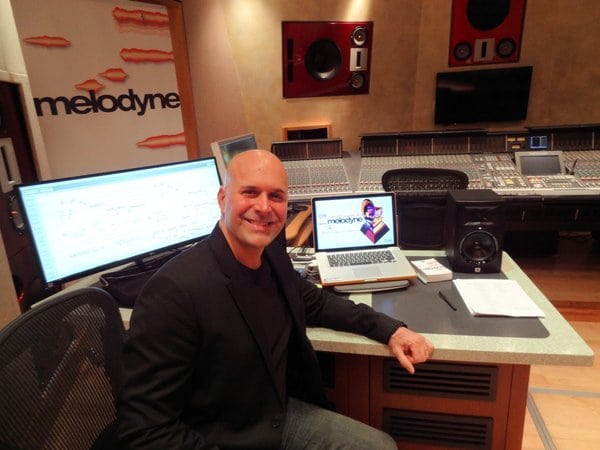If you’re into music composing & editing, you probably already know about Melodyne and its range of professional music editing software. For those who don’t, Melodyne is the pinnacle of pitch quality and time manipulation software, along with vocal tuning and audio alternation.
From the house of Celemony, Melodyne has been the software of choice for many music professionals since its release in 2009, giving users access to independent notes in chords, and polyphonic pitch editing. Christened as DNA, Melodyne 4 is the latest iteration of this cutting-edge software and is one of the most highly-anticipated software releases of the year. The company has announced live demonstrations of their newest offering, at the 2016 NAMM how.

Celemony’s launch of the fourth version of its legendary audio software, Melodyne, isn’t just a facelift. Developers have claimed that this version is the most comprehensive update in the products history, as well as they company’s! This constitutes the most extensive update to the entire product family in the company’s history, with Melodyne 4 studio being the package’s highlight. Let’s take a peek at some of the Melodyne 4’s new features:
The Sound Editor
With a focus on the software’s studio suite, the new sound editor is a true innovation. Unlike other equalizers that only allow users to adjust the volumes of pre-set frequencies, Melodyne 4 goes much deeper than the regular editing of notes in chords.
The software’s proprietary spectral editing functions give users access to any note’s harmonics, enabling them to increase and lower individual frequencies. What this basically means is that it will maintain the harmonic profile detection and separation settings chosen by you, allowing users to literally change the resonance of the entire track, irrespective of what notes are playing.

Tempo Detection & Manipulation
Melodyne 4’s new tempo detection algorithms allow users to accurately identify the exact tempo of a track, at any precise time, even if there was no click to signify the recording. The software’s new Tempo Editor allows users to rope in the desired amount of acceleration, without sacrificing the smaller, less obvious sounds that complete the performance.
This is possible as it allows users to sync rigid loops, including live recordings. Melodyne 4 even has the capability of analyzing live performances according to its tempo, including wavering. At the end of you, users are privy to a tempo curve that can be manipulated at will, in order to gain control of the tempo at any point in the track.
Multitrack Note Editing
Another feature that deserves to be mentioned is the brand new “Multitrack Note Editing” option, available in Melodyne 4 studio. This brand new feature allows the user to view, select, and modify notes for multiple tracks, simultaneously. This makes modification of notes, melodies and harmonies easy, whether it’s on the same track or multiple ones. Users can also use this feature to accurately sync notes on different tracks. With Melodyne 4, the software’s Direct Note Access (DNA) technology can now be applied on multiple tracks, allowing users to edit notes at any time.

New Sound Design Possibilities
With Melodyne 4’s upgraded sound editor, come comprehensive synthesis controls that offer envelope controls for aspects like alternations in spectrum, amplitude, and formants. The sound editor also provides a built in pseudo resynthesis system that identifies the track’s sonic properties and produces a synthesized version of that same precise sound.
With rumors and updates about Celemony Software’s near-magical Melodyne 4 pitch editor keep flooding the Internet, some critics are even saying that the software could evolve into a standalone a Digital Audio Workstation (DAW). And there’s no better place then NAMM 2016 to find out if this extremely futuristic technology actually will.
Featured Image: Image Credit
#Music #Tech #Design: amazing musical #instrument using 2000 #marbles! #MarbleMadness ► https://t.co/NMhjpkBNHX pic.twitter.com/CBSkS7Yz74
— Maxime Duprez (@maximaxoo) March 3, 2016
Machine-made #music: #tech podcast from @guardian https://t.co/xJcjDFejdj #computer #musical pic.twitter.com/ujDR0CquPf
— Luminous (@LuminousPR) March 4, 2016
Related Articles:
Celemony Melodyne 4 Is Here – PreSonus Studio One Compatible
New technologies and a new degree of freedom for the entire Melodyne family. Celemony has released version 4 of its legendary audio software Melodyne, and it’s fully compatible with Studio One. This constitutes the most extensive update to the entire product family in the company’s history, with the emphasis on Melodyne 4 studio. Highlights include the Sound Editor with its totally new sound design possibilities, DNA Direct Note Access – at last, on an unlimited number of tracks – and ultra-accurate tempo detection. The smaller Melodyne editions – editor, assistant and essential – have also been enhanced. Via Studio One
Celemony Releases Melodyne 4
Germany-based audio software developer Celemony is officially on their fourth release of Melodyne.
Melodyne 4 studio introduces new technology with the most extensive update Celemony has produced throughout the company’s history. Highlighted updated include the Polyphonic Spectrum Shaper, Sound Editor with new sound design possibilities, DNA Direct Note Access, unlimited number of tracks, and ‘ultra-accurate’ tempo detection. Editor, Assistant, and Essential versions have also been enhanced, only with smaller function sets. Via Sonic Scoop
NAMM 2016: Melodyne 4 can manipulate harmonics and detect tempo
NAMM 2016: Updates to Celemony Software’s pseudo-magical pitch editor Melodyne don’t come alone very often, but when they do, you can expect them to feature some as-yet unimaginable new technology.
Back in 2009, we got access to individual notes in chords, with the polyphonic pitch editing capabilities of Melodyne Editor- dubbed DNA by Celemony.
For version 4, Melodyne has really turned up the heat, offering comprehensive spectral editing features, tempo detection and click generation, all within a multitrack setup. Dare we say that it’s beginning to operate sort of like a DAW in itself? Via Music Radar

